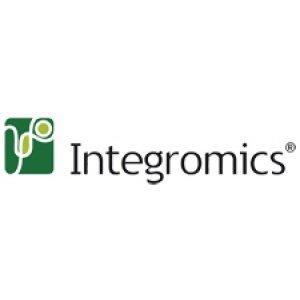ORNL MICROARRAY HYBRIDIZATION PROTOCOLS
Direct labeling of total RNA with Cy3 and Cy5:
A. MATERIALS
RNeasy® Mini Kit (Qiagen; Cat # 74106)
SuperScript II RT (200U/µL) (Life Technologies; Cat # 18064-014)
QIAquick PCR Purification Kit (Qiagen; Cat # 28106)
100 mM dNTP Set PCR grade (Life Technologies; Cat # 10297-018)
Primers: Poly d(T) [20-mers] 2.5 mg/mL (avoids labeling the gDNA and rRNA.)
Anchored poly d(T) primers
(Archaic) Random Hexamer primers (3mg/mL) (Life Technologies; Cat # 48190-011)
Cyanine 3-dUTP # NEL578 or Cyanine 5-dUTP #NEL579 (Perkin Elmer/NEN)
B. REAGENT PREPARATION
50X dNTPs
| 50X [ ] | Stock [ ] | For 1.0 ml of 50X use: | |
| dTTP | 5 mM | 100mM | 50 µL |
| dATP | 25mM | 100mM | 250 µL |
| dGTP | 25mM | 100mM | 250 µL |
| dCTP | 25mM | 100mM | 250 µL |
| RF-ddH20 | 200 µL |
| Master Mix: | (Per Reaction) | USED TODAY: |
| 5X Enzyme Buffer | 6 µL | |
| 0.1 M DTT | 3 µL | |
| 50X dNTPs | 0.6 µL | |
| Superscript II RT | 2 µL |
C. PROCEDURE: This protocol uses 30-100µg of total RNA (Prepare two 30-100 µg samples for comparative hybridizations using two-colors). To use the volumes listed, the RNA must be at ? 2.5 mg/ml. Protect slide from light at all times until imaged to prevent bleaching of dyes.
1. Annealing Primer to RNA:
1.1. Dispense 30-100µg of total RNA (12.9 µL total) into screw-cap tube
1.2. Add 2.5 µL of oligo dT (2.5 mg/ml)
1.3. Adjust volume to 15.4 µL with DEPC water.
1.4. Heat to 70°C for 10 min to denature
1.5. immediately transfer to ice for > 2 min.
2. Direct Incorporation of Cy-dUTP by Reverse Transcription
2.1. To each sample add 3.0 µL of either Cy-3 (pink) or Cy-5 (blue) dUTP (NEN).
2.2. To each sample add 11.6 µL of master mix (see above).
2.3. Incubate 1 hr at 42°C.
2.4. Add 1 µL of SuperScript II Reverse Transcriptase (GIBCO/Life Technologies) to each tube and incubate another 1 hour at 42°C.
2.5. Remove samples to ice.
2.6. Add 1.5 µL of 20mM EDTA to stop reaction
2.7. Add 7.5 µL of 0.1 M NaOH. Heat to 70°C for 10 min to hydrolyze the RNA.
2.8. Cool to RT° and add 7.5 µL of 0.1 M HCl to neutralize the sample. (The HCl step can be skipped if using QIAQUIK columns below)
2.9. Volume now should be 47 µL per sample
3. Removal of unincorporated CY-dUTPs by QIAquick PCR Purification Columns
3.1. Add 237.5 µL (5 volumes) of Buffer PB to samples.
3.2. Place onto QIAquick column.
3.3. Spin 30-sec @ 12K. Discard filtrate.
3.4. To column, add 700 µL PE. Spin 30 sec @ 12K. Discard filtrate
3.5. To column, add 700 µL PE. Spin 30 sec @ 12K. Discard filtrate.
3.6. Re-spin column to dry column bed.
3.7. Move column to fresh µ-fuge tube
3.8. Add 30 µL EB to center of column bed. Spin 30 sec @ 12K. Do not change tube.
3.9. Add another 30 µL EB to center of column bed. Spin 30 sec @ 12K. Save pooled eluant.
3.10. Mix the differently labeled samples (e.g. Cy-3 and Cy-5) at this point.
3.11. Remove 1-2 µL of sample to check RT-reaction on agarose gel (Optional)
4. Addition of Blocking Agents and resuspention of labeled RNA in Hybridization Buffer
4.1. To each mixed sample, add .2 µL of polydA (1mg/ml), and 1 µL of Cot-1 DNA (1mg/ml)
4.2. Dry samples in Speedvac using medium setting. Do NOT use “High” setting which turns on heat light. Should take about 15-30min. Dried samples can be temporarily stored, wrapped in foil, frozen at -80°C.
4.3. Begin Prehybridization of arrays while samples are drying
4.4. Dried samples should be resuspended in hybridization buffer* then used immediately.
4.5 Continue with the ORNL AT Hybridization Protocol to apply the probe to a microarray.
** The volume used is very important, and should be matched to the surface area of the coverslip. Ideally, the cover slip should "float" over the surface of the array and a little excess around the edges of the coverslip is needed for this. Too little volume will cause the coverslip to rest on the array (drying or poor hybridization will occur), or provide too little diffusion of the target during hybridization. Too much volume is wasteful, could cross-contaminate other arrays on the same slide, or means you could have concentrated your sample more to provide better signal. It also may cause your coverslip to slip off, if the arrays are not perfectly horizontal during the hybridization. We frequently hybridize two 20mm X 20mm arrays per slide. With the proper volume (20µl) of hybridization buffer, they will not leak from under the coverslip and cross-contaminate the other array. |
Secure the top of the microfuge tube with a clip, and heat to 95°C for 5 min to denature.
Centrifuge 2 minutes. Do not transfer to ice.
Apply targets to the microarray, avoiding bubbles. Place coverslip slowly down onto array. If bubbles form, do not attempt to "push" them out. This will damage your array.
Hybridize the array in a humidified container overnight (16-18 hours) in a 42°C water bath.
(floating is usually OK, but can be placed on a support to keep it level)
After hybridization, remove slide from Hybridization chamber (avoid water dripping onto array).
Wash array:
1 X 5min in 2X SSC, 0.1% SDS @ 42°C (37-42°C is OK)
2 X 5min in 0.2X SSC at RT°
4 X 1min in 0.1X SSC at RT°
Holding the slide at the bottom, by the barcode, with the arrays upward, dry with compressed nitrogen blowing towards the holder at the bottom of the slide.
Protect slide from light at all times until imaged to prevent bleaching of dyes.
![]()
Indirect labeling of RNA using aminoallyl-modified nucletides and monoester reactive Cy-dyes
1. MATERIALS
1.1 5-(3-aminoallyl)-2’deoxyuridine-5’-triphosphate (AA-dUTP) (Sigma; Cat # A0410)
1.2 100 mM dNTP Set PCR grade (Life Technologies; Cat # 10297-018)
1.3 Primers
1.3.1 Poly d(T) [20-mers] 2.5 mg/mL used instead of random primers to avoid labeling the gDNA and rRNA.
1.3.2 Anchored poly d(T) primers
1.3.3 (Archaic) Random Hexamer primers (3mg/mL) (Life Technologies; Cat # 48190-011)
1.4 SuperScript II RT (200U/µL) (Life Technologies; Cat # 18064-014)
1.5 Cy-3 ester (AmershamPharmacia; Cat # PA23001: 100,000 picomoles dye/tube)
1.6 Cy-5 ester (AmershamPharmacia; Cat # PA25001: 100,000 picomoles dye/tube)
1.7 Monoreactive dye pack for aminoallyl labeling (Amersham Cat # RPN5661: 40,000 picomoles dye/tube. Cy3 and Cy5)
1.7 QIAquick PCR Purification Kit (Qiagen; Cat # 28106)
1.8 RNeasy® Mini Kit (Qiagen; Cat # 74106)
1.9 Microcon YM-30 Centrifugal Filter Devices (Millipore; Cat # 42410)
1.10 Anhydrous DMSO (EM Scientific, "DriSolv™", #EM-MX1457-6 from VWR)
2. REAGENT PREPARATION
2.1 Phosphate Buffers2.1.1 Prepare 2 solutions: 1M K2HPO4 and 1M KH2PO42.2 Aminoallyl dUTP
2.1.2 To make a 1M Phosphate buffer (KPO4, pH 8.5-8.7) combine:1M K2HPO4 9.5 mL2.1.3 For 100 mL Phosphate wash buffer (5 mM KPO4, pH 8.0, 80% EtOH) mix:
1M KH2PO4 0.5 mL
(Store 1M KPO4 (pH 8.5) @-20°C in 10ml aliquots)1 M KPO4 pH 8.5 0.5 mL2.1.4 Phosphate elution buffer (PEB) is made by diluting 1 M KPO4, pH 8.5 to 4 mM with MilliQ water. Make 10 ml, aliquot into 1.0 ml, and store @-20°C
MilliQ water 15.25 mL
95% ethanol 84.25 mL
Note: Wash buffer will be slightly cloudy at first. Store Phosphate wash buffer @ room temperature.
2.1.5 To prepare 0.1 M KPO4 (pH=7.5) mix, then autoclave:1M K2HPO4 41.5 mL
1M KH2PO4 8.5 mL
MilliQ water 450 mL2.2.1 For a final concentration of 100 mM add 19.1 µL of 0.1 M KPO4 buffer (pH 7.5) to a stock vial containing 1 mg of aa-dUTP. Gently vortex to mix and transfer the aa-dUTP solution into a new microfuge tube. Store at –20°C.2.3 Labeling Mix (50X) with 2:3 aa-dUTP: dTTP ratio
2.2.2 Measure the concentration of the aa-dUTP solution by diluting an aliquot 1:5000 in 0.1 M KPO4 (pH 7.5) and measuring the OD289. (Stock concentration in mM = OD289 x 704)2.3.1 Mix the following reagents:2.4 Sodium Carbonate Buffer (Na2CO3): 1M, pH 9.02.3.2 Store unused solution ("aa-dNTP Mix") at –20°C.
Stocks Mix: Final Concentration dATP (100 mM) 5 µL (25 mM) dCTP (100 mM) 5 µL (25 mM) dGTP (100 mM) 5 µL (25 mM) dTTP (100 mM) 3µL (15 mM) aa-dUTP (100 mM) 2µL (10 mM) Total: 20µL Note: Varying the ratio of aa-dUTP to dTTP will affect incorporation 2.4.1 Dissolve 10.8 g Na2CO3 in 80 mL of MilliQ water2.5 Cy-dye esters
2.4.2 Adjust pH to 9.0 with 12 N HCl, then bring volume up to 100 mL with MilliQ water.
2.4.3 Aliquot into 1.0 mL tubes and freeze at -80°C. Use each tube for only 1-2 weeks.
Note: Carbonate buffer changes composition over time; aliquots stored at -80°C sould be made fresh every couple of months.2.5.1 Cy3-ester and Cy5-ester are provided From Amersham (# RPN5661) as a dried product in 12 tubes each.
2.5.2 Resuspend a tube of dye ester in 7.5 µL of anhydrous DMSO.
2.5.3 Aliquot 2.5 mL (approximately 13,000 picomoles) into 3 screw-cap tubes and place at -80°C in a light-proof rack with desiccant. This will allow you to use each packet three times.2.5.3.1 For the PA23001 and PA25001 dye packets, resuspend in 20 µL and aliquot 2.5 µL (12,500 picomoles) into 8 tubes.2.5.4 Wrap all reaction tubes with foil and keep covered as much as possible in order to prevent photobleaching of the dyes.
Note: Any water introduced to the dye esters will result in a lower coupling efficiency due to the hydrolysis of the dye esters. Because anhydrous DMSO is hygroscopic (absorbs water from the atmosphere), store DMSO well sealed at -80°C in desiccant unless a dry atmosphere can be maintained in the stock bottle.
3. PROCEDURE
3.1 Aminoallyl Labeling3.1.1 To 10-20 µg of high-quality (e. g. CsCl-isolated, DNAse-treated, or QIAGEN RNAeasy purified) total RNA (or 2 µg poly(A+) RNA), add 2.5 µL oligo d(T) or "anchored-T" primers (2.5mg/mL) and bring the final volume up to 18.5 µL with RNase-free water.3.2 Reaction Purification I: Removal of unincorporated aa-dUTP and free amines (use either the Qiagen or the Microcon method, not both)
3.1.2 Mix well and incubate at 70°C for 10 minutes.
3.1.3 Immediately place in an ice-water bath for 60 seconds, then centrifuge briefly at >10,000 rpm @ 4°C.
3.1.4 Thaw the following on ice and then add to each tube:3.1.5 Mix and incubate at 42°C for 3 hours to overnight.
5X First Strand buffer 6 µL 0.1 M DTT 3 µL (Vortex after thawing) 50X aminoallyl-dNTP mix 0.6 µL SuperScript II RT (200U/µL) 2 µL (Keep @ -20°C until use)
3.1.6 To hydrolyze RNA, thaw the following and add:0.5 M EDTA 10 µL3.1.7 mix and incubate at 65°C for 15 minutes or 70°C for 10 minutes.
1 M NaOH 10 µL
3.1.8 Add 10 µL of 1 M HCl to neutralize pH. (Alternatively, one can add 25 µL of 1 M HEPES pH 7.0 or 25 µL of 1 M Tris pH 7.4)
Qiagen Cleanup Method:
Note: This purification protocol is modified from the Qiagen QIAquick PCR purification kit protocol. The phosphate wash and elution buffers (prepared in 2.1.3 & 2.1.4) are substituted for the Qiagen supplied buffers because the Qiagen buffers contain free amines which compete with the Cy dye coupling reaction.3.2.1 Mix cDNA reaction with 300 µL (5X reaction volume) buffer PB (Qiagen supplied) and transfer to QIAquick column.
3.2.2 Place the column in a 2 ml collection tube (Qiagen supplied) and centrifuge at ~13,000 rpm for 1 minute. Empty collection tube.
3.2.3 To wash, add 700 µL phosphate wash buffer to the column and centrifuge at ~13,000 rpm for 1 minute.
3.2.4 Empty the collection tube and repeat the wash and centrifugation step (5.2.3).
3.2.5 Empty the collection tube and centrifuge empty column an additional 1 minute at maximum speed.
3.2.6 Transfer column to a new 1.5 mL microfuge tube and carefully add 30 µL phosphate elution buffer (see 4.1.4) to the center of the column membrane.
3.2.7 Incubate for 1 minute at room temperature.
3.2.8 Elute by centrifugation at ~13,000 rpm for 1 minute.
3.2.9 Elute a second time into the same tube by repeating steps 5.2.6- 5.2.8. The final elution volume should be ~60 µL.
3.2.10 Dry sample in a speed vac protected from light. This is a STOPPING POINT
Microcon YM-30 Cleanup Method:
3.2.1 Place the Microcon sample reservoir into a collection microfuge tube. Add 375 µL of water to the cDNA reaction tube and then pipette the sample into the Microcon sample reservoir/collection microfuge tube without touching the membrane.3.3 Coupling aa-cDNA to Cy Dye Ester.
3.2.2 Centrifuge at 12,000 rpm for 6-10 min.
Note: Never centrifuge column to dryness as this will decrease product recovery. Adjust spin time to allow for optimal filtration while allowing enough solution to remain for sufficient recovery.
3.2.3 Empty collection microfuge tube.
3.2.4 To wash add 450 µL of water to the sample reservoir/collection microfuge tube and centrifuge at 12,000 rpm for 6-10 minutes.
3.2.5 Empty collection microfuge tube and repeat previous wash step.
3.2.6 Invert Microcon sample reservoir into a new collection microfuge tube and centrifuge at 12,000 rpm for 1 minute to collect purified sample.
3.2.7 Dry the sample in a speed vac. This is a STOPPING POINT3.3.1 Resuspend aminoallyl-labeled cDNA in 7.5 µL 0.075 M sodium carbonate buffer (Na2CO3), pH 9.0 that has been freshly diluted from 1M stock (e.g. 7.5 mL of 1M stock into 92.5 mL water)3.4 Reaction Purification II: Removal of uncoupled dye (Qiagen PCR Purification Kit)3.3.1.1 If using dried-down Cy-dyes in following step, resuspend aa-DNA in 10.0 mL of 0.050 M sodium carbonate buffer, and transfer entire contents to the tube with dried dye pellet. The goal of the coupling reaction is to have approximately 13,000 picomoles of Cy-dye in 50 mM carbonate buffer (final concentration) with your aa-DNA.3.3.2 Add 2.5 µL of the appropriate NHS-ester Cy dye (prepared in DMSO: see step 2.5)
Note: To prevent photobleaching of the Cy dyes wrap all reaction tubes in foil and keep them sequestered from light as much as possible using "dark" racks.
3.3.3 Incubate the reaction for 1 hour in the dark at room temperature.3.4.1 To the reaction add 35 µL 100 mM NaOAc pH 5.2 (from freezer).3.5 Analysis of Labeling Reaction
3.4.2 Add 250 µL (5X reaction volume) Buffer PB (Qiagen supplied).
3.4.3 Place a QIAquick spin column in a 2 mL collection tube (Qiagen supplied), apply the sample to the column, and centrifuge at ~13,000 for 1 minute. Empty collection tube.
3.4.4 To wash, add 0.70 mL Buffer PE (Qiagen supplied) to the column and centrifuge at ~13,000 for 1 minute. Repeat wash step 3.4.4 one time, then proceed to 3.4.5
Note: Make sure Buffer PE has added ethanol before using
3.4.5 Empty collection tube and centrifuge empty column for an additional 1 minute at maximum speed.
3.4.6 Place column in a clean 1.5 mL microfuge tube and carefully add 30 µL Buffer EB (Qiagen supplied) to the center of the column membrane.
3.4.7 Incubate for 1 minute at room temperature.
3.4.8 Elute by centrifugation at ~13,000 rpm for 1 minute.
3.4.9 Elute a second time into the same tube by repeating steps 3.4.6- 3.4.8. The final elution volume should be ~60 µL.
Note: This protocol is modified from the Qiagen QIAquick Spin Handbook (04/2000, pg. 18).3.5.1 Use a 50 µL Beckman quartz MicroCuvette to analyze the entire undiluted sample in a spectrophotometer.3.6 Add blocking agents to achieve a final concentration of:3.5.1.1 Wash the cuvette with water and blow dry with compressed air duster.3.5.2 Using a Nanodrop™ Spectrophotometer remove 1 µL of your labeling reaction and place on nanodrop optical stage.
3.5.1.2 Pipette sample into cuvette and place cuvette in spectrophotometer.
3.5.1.3 For each sample measure absorbance at 260 nm and either 550 nm for Cy3 or 650 nm for Cy5, as appropriate.
3.5.1.4 Pipette sample from cuvette back into the original sample tube.
3.5.1.5 For each sample calculate the total picomoles of cDNA synthesized using:pmol nucleotides = [OD260 * volume (µL) * 37 ng/µL * 1000 pg/ng]
324.5 pg/pmolNote: 1 OD260 = 37 ng/µL for cDNA; 324.5 pg/pmol average molecular weight of a dNTP)3.5.1.6 For each sample calculate the total picomoles of dye incorporation (Cy3 or Cy5 accordingly) using:pmol Cy3 = OD550 * volume (µL)
0.15pmol Cy5 = OD650 * volume (µL)
0.25nucleotides/dye ratio = pmol cDNA
pmol Cy dyeNote: >200 pmol of dye incorporation per sample and a ratio of less than 50 nucleotides/dye molecules is optimal for hybridizations
3.5.1.7 After analysis mix together the two differentially labeled probes (Cy3 vs. Cy5) which will be hybridized to the same microarray slide.
3.5.2.1 Read sample using microarray software and calculate nucleotide/dye ratio as in steps 3.5.1.60.1 mg/mL Cot-1 DNA (e. g. 0.2 µL of 10mg/ml in 20 µL hyb buffer)3.7 Dry the Cy3/Cy5 probe mixture to completion in a speed vac
0.02 mg/mL poly d(A) (e. g. 0.4 µL of 1.0 mg/mL in 20µL hyb buffer)
Note : Too much poly d(A) will cause a reduction in fluorescence
3.8 Continue with the ORNL AT Hybridization Protocol to apply the probe to a microarray.
![]()
Direct labeling of small amounts of total RNA
Sub-micro Cy3&Cy5 Labeling of RNA for Microarrays #2
Modified to use Genisphere Sub-micro kit
**** CAUTION *** Protocol under construction!
In microfuge tube combine: ("Primer Mix", 10ul)
2ul total RNA (~.5 ug)
3ul RT Primer (0.2 pmole… "Vial 2")
5ul RF-H2O (q.s. 10 ul)
Mix and zing.
Heat to 80°C, 10min, then immediately ice
In separate mfuge tube on ice mix: ("Reaction Mix" 10ul)
4ul 5X RT buffer (Vial 5)
1ul dNTP mix (Vial 4)
4ul RF H20
1ul (200 Units) reverse transcriptase enzyme (Vial 3)
Gently mix and zing.




















